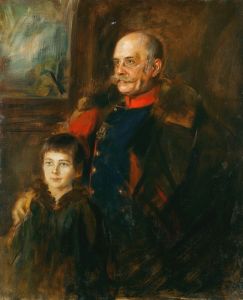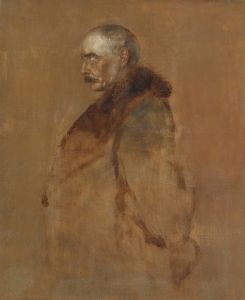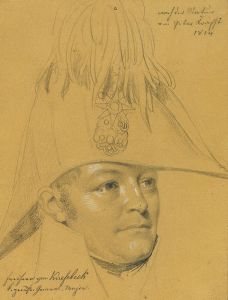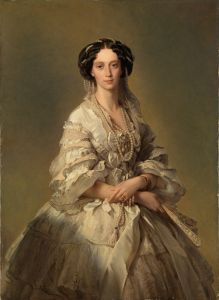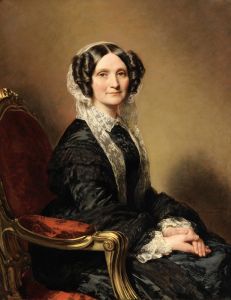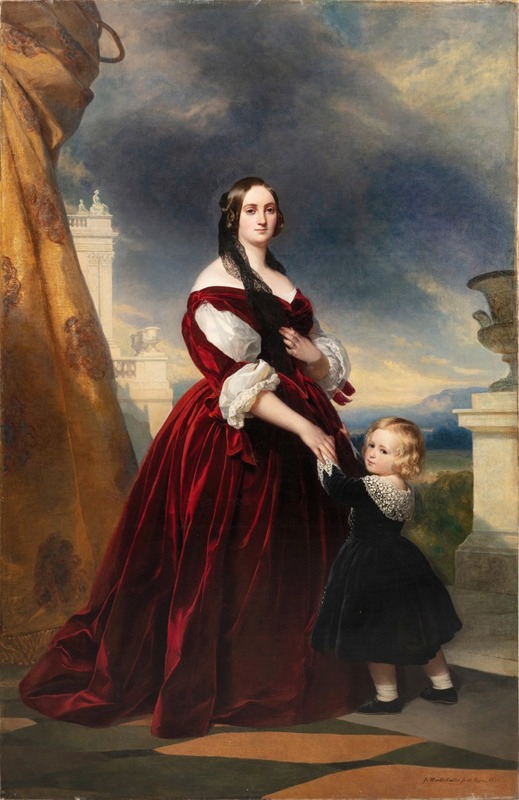
Portrait of the Countess Duchâtel with her son, Vicomte Charles Tanneguy Duchâtel
A hand-painted replica of Franz Xaver Winterhalter’s masterpiece Portrait of the Countess Duchâtel with her son, Vicomte Charles Tanneguy Duchâtel, meticulously crafted by professional artists to capture the true essence of the original. Each piece is created with museum-quality canvas and rare mineral pigments, carefully painted by experienced artists with delicate brushstrokes and rich, layered colors to perfectly recreate the texture of the original artwork. Unlike machine-printed reproductions, this hand-painted version brings the painting to life, infused with the artist’s emotions and skill in every stroke. Whether for personal collection or home decoration, it instantly elevates the artistic atmosphere of any space.
"Portrait of the Countess Duchâtel with her son, Vicomte Charles Tanneguy Duchâtel" is a painting by the renowned German artist Franz Xaver Winterhalter. Winterhalter, born in 1805 in Menzenschwand, Germany, was a highly sought-after portraitist in the 19th century, known for his elegant and flattering depictions of European royalty and aristocracy.
The painting features Countess Duchâtel, whose full name was Rosalie Clémence de La Bourdonnaye-Blossac, and her young son, Vicomte Charles Tanneguy Duchâtel. Rosalie Clémence was married to Charles Marie Tanneguy Duchâtel, a prominent French statesman who served as Minister of the Interior under King Louis-Philippe. The Duchâtel family was well-connected and influential in French political and social circles during the July Monarchy.
In this portrait, Winterhalter captures the grace and sophistication of the Countess and the innocence of her son. The Countess is depicted seated, wearing an elegant dress that reflects the fashion of the time, with intricate details and luxurious fabrics. Her son, Vicomte Charles Tanneguy, stands beside her, dressed in a manner befitting a young nobleman. The composition of the painting emphasizes the close bond between mother and child, a common theme in Winterhalter's work.
Winterhalter's technique is characterized by his use of soft, delicate brushstrokes and his ability to render textures and fabrics with remarkable realism. The artist's attention to detail is evident in the intricate patterns of the Countess's dress and the lifelike quality of the figures' skin and hair. The background of the painting is kept relatively simple, ensuring that the focus remains on the subjects.
The portrait is a testament to Winterhalter's skill in capturing the personalities and social status of his sitters. His ability to convey the elegance and refinement of the European aristocracy made him a favorite among the elite, and his portraits were highly prized. This particular painting is an excellent example of his work and provides insight into the fashion, culture, and social dynamics of the period.
"Portrait of the Countess Duchâtel with her son, Vicomte Charles Tanneguy Duchâtel" is part of a larger body of work by Winterhalter that includes portraits of many notable figures of the 19th century. His paintings are held in high esteem and can be found in major museums and private collections around the world. This portrait, like many of Winterhalter's works, continues to be admired for its artistic merit and historical significance.







